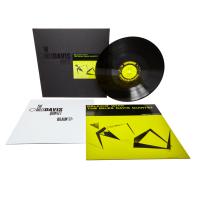I have a copy as well and I love how it sounds. The trumpet does have quite an edge to it. Not as edgy on the small batch vs the standard digital version. I have not heard an OJC version. The OJC's I do have are fabulous. One thing I want to point out, although the packaging is a bit tight (you need to pull a ribbon to pull out the contents), I prefer the Craft package over the MoFi One Step. With the MoFi, one has to remove layers of foam, inserts, sleeves...you name it. The Craft cover fits in nicely with the rest of one's records and you do not need a large table to lay all the filler said just to play a record.
Explorin’ the Open Sounds of the Bernie Grundman-Mastered, RTI One-Step-Pressed, Craft Recordings Small Batch Series 180g 1LP Release of Relaxin’ With The Miles Davis Quintet
The prospect of reviewing a new, ultra-deluxe 180g version of the March 1958 hard-bop classic Relaxin’ With The Miles Davis Quintet has been simultaneously daunting and exciting. It is the first time I’ve gotten my hands on one of these tasty, fancy editions that’s an upstanding member of Craft Recordings’ popular and acclaimed Small Batch series. This series uses RTI’s noted one-step vinyl manufacturing process, which effectively delivers a pressing made off a first-generation metal mother made from the original lacquer. (FYI, for any of our newbie readers — traditionally, safety stampers are made and used for mass production.)
Fortunately, I felt I was in a fairly good position to take on this task in a way that would be as objective as possible, and ultimately be helpful to those of you considering buying it. To wit: I have in my collection, for comparison/contrast, an original 1950s-era copy of Relaxin’ With The Miles Davis Quintet as well as a 1980s reissue that was part of Fantasy’s fine Original Jazz Classics — a.k.a. OJC — series.
If you are not familiar with this music, the official press release from Craft Recordings offers useful summary insight, which follows in italics in the next paragraph [with a brief note added at the end of it, from yours truly—MM]:
Relaxin’ finds Miles Davis and his legendary sidemen at the top of their game. First assembled in 1955, the trumpeter’s “First Great Quintet” became the dominant small jazz group of the era and was essential in defining the hard-bop genre. Between November 1955 and October 1956, the quintet recorded three exceptionally productive sessions with the celebrated engineer Rudy Van Gelder, who simulated the group’s nightclub sets at his Hackensack, NJ studio. The resulting 32 tracks would make up six significant albums: 1956’s Miles: The New Miles Davis Quintet, 1957’s Cookin’, 1958’s Relaxin’, 1959’s Workin’, and 1961’s Steamin’.
[Editor’s note: There are actually five albums listed above, not six, which comprise 30, and not 32, tracks. We can debate these numbers and stats differences in terms of what’s not cataloged/counted here in the Comments section below; but for now, let’s return to the review at hand!—MM]
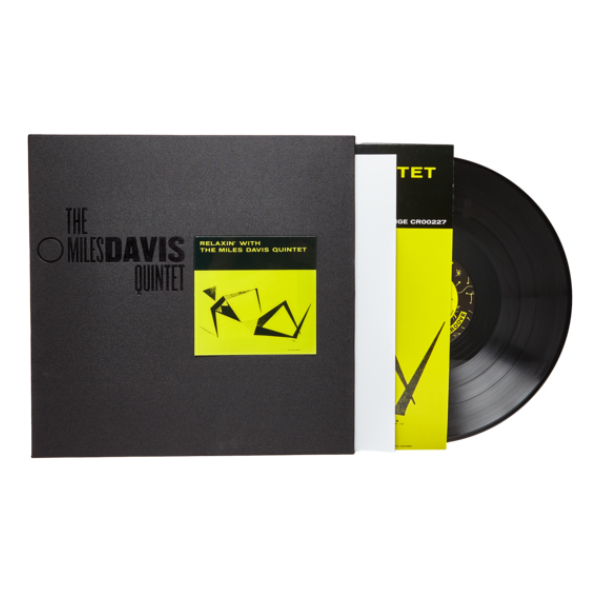
This stellar quintet includes, in addition to Miles Davis on trumpet, John Coltrane on saxophone, bassist Paul Chambers, drummer Philly Joe Jones, and Red Garland on piano. (You can read more about the recording in the reissue’s fresh liner notes penned by Grammy Award-winning music historian, journalist, and producer Ashley Kahn, as presented across the interior spread of this collection’s four-page insert.) In short, the music this group created effectively set the stage for Davis’ groundbreaking and massively successful August 1959 all-time classic, Kind of Blue.
Okay, enough history (for now). Let’s dive into some listening nitty-gritties — and there will be a lot of that here, so get ready for a good bit of this vinyl geek’s rollercoaster listening ride ahead.
As I hadn’t played the album in a while, I felt it was important to reacquaint myself with Relaxin’ With The Miles Davis Quintet across my two different turntables, and three — well, almost four, as it turned out — different cartridges and styli. Each delivered a different perspective on the music worth considering. (Hold on to this thought for a moment or two as my journey begins.)
I started with my well-loved original 1950s-era pressing — which admittedly is not in the greatest condition — but on my secondary turntable, it can still sound quite enjoyable. Listening first with a workhorse Sumiko Pearl cartridge — which I use for playing older and less-than-perfect albums — the ’50s album sounded pretty good, actually, inevitable ticks ’n’ pops aside.
A sidenote: Collectors of vintage vinyl can appreciate how hard it is to find clean copies of vintage jazz albums without breaking the bank! For example, the 14 copies on Discogs (at the time of this posting) range in price from $40 for a good-plus copy to $350 for a near mint one. I picked up a super-cheap copy — particularly because the cover was near perfect — with hopes that someday I will find an upgrade LP.
Next, I broke out my mint-condition 1980s Original Jazz Classics (OJC) edition of the album, which sounds excellent. If you’re not familiar with this series, you should look into it, as its entries are very well-prepared by some great mastering engineers. I played the OJC version on my Music Hall MMF 7.1 turntable, which is fitted with a Goldring 2400 cartridge updated with a 2100 stylus — a bit more forgiving for stock pressings from the late-’50s to the ’80s, of which I play a lot (again, hold onto that thought for another moment). The OJC is a wee bit brighter than the 1950s edition, but in general, the feeling and intent of the album rings true. The standard-weight vinyl is quiet and well-centered, so I had no problems on that front.
Listening to the OJC, my appreciation for the (likely) close-mic’d, brassy breathiness captured by legendary engineer Rudy Van Gelder (a.k.a. RVG) was renewed. Listening with eyes closed, there are times you feel like you are sitting a few inches from Miles Davis and/or John Coltrane.
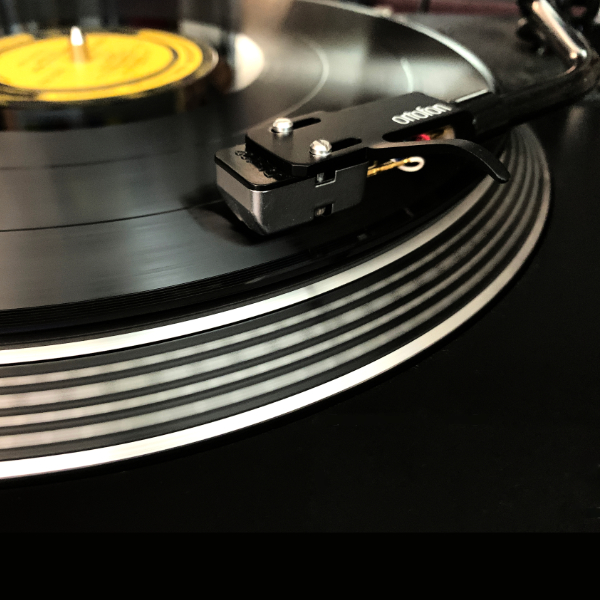
Out of curiosity, I went back to my other turntable and swapped out the Sumiko for my Denon DL-102 mono cartridge, and returned to the original 1950s-era pressing. I shouldn’t have been surprised at what I heard, but I was a bit blown away at the increased sense of presence and fidelity I was hearing out of this old slab of vinyl, compared to the stereo Sumiko Pearl. (There are many reasons for this beyond the scope of this review, which I’ve written about elsewhere.)
Once I got my levels set more or less equal between the two turntables (each running through similar Bellari tube pre-amps), I was able to easily switch back and forth while both versions were playing. The 1950s pressing was still less bright than the OJC, but I was also hearing and feeling other things there using the mono cartridge — instrumental presence, and such — all of which rang true to my personal preferences.
I was starting to more fully grok the difference between the pressings. RVG’s 1950s version felt in some ways a bit richer and tighter on the bass and midranges, but the 1980s OJC edition definitely sounded more open and airy. RVG’s original recording seems to have put the brass instrumentation — i.e., Miles and Coltrane — front and center in terms of the audio spectrum while also making room for the crisp drums and cymbals. While the bass is more upfront than some RVG mixes I’ve heard, both it and the piano sound like their high end had been rolled off a bit — an understandable engineering choice, if certain frequencies might have been stepping on one another in the mix. However, Red Garland’s piano bears some of that boxy flavor I have noticed on many other RVG recordings.
Overall, the 1950s vinyl felt more compressed, which is not entirely surprising, given the capabilities of average audio gear of the period. Frequencies were probably pulled back so as to keep non-audiophile tonearms from jumping out of the grooves or sounding distorted on particularly hot passages. (That latter thought will come up again soon, so also keep that in mind as you read on.)
Now, having a fairly solid point of reference etched in my head, it was time to play Craft Recordings’ new Small Batch audiophile version of Relaxin’ With The Miles Davis Quintet. I should first note that a) this Craft edition retails for $109.99, b) is limited to 5,000 copies, and c) is available exclusively from Craft Recordings.
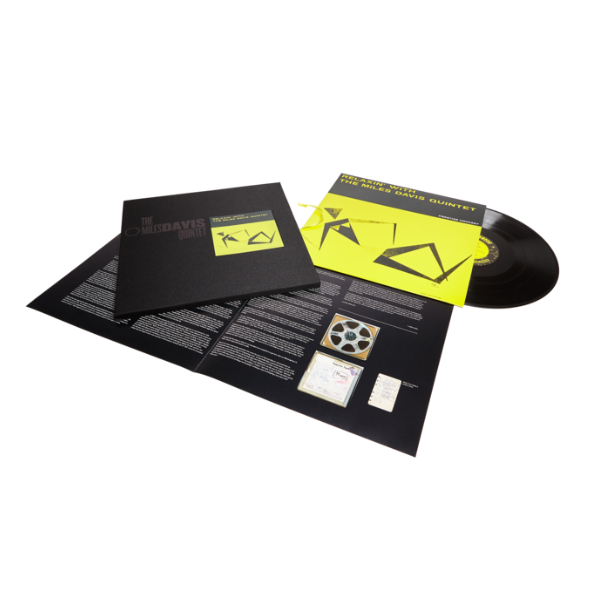
Just opening the packaging on this new Small Batch series is impressive, featuring a super-deluxe, thin-line, hard-shell, foil-stamped black-linen outer box protecting the LP inside, which itself comes in its own shrink wrap. [I can confirm firsthand that the white pull tab/string makes removing both the LP and the liner notes from said outer box much easier, btw—MM] The reissue cover of Relaxin’ With The Miles Davis Quintet looks very much like my original pressing (notably the spine), except for the new serial number. The labels are period-accurate, featuring Prestige’s classic “fireworks” mid-1950s design and a similar “stacked” text layout as on my ’50s original. (The ’80s OJC’s fireworks label is laid out differently.)
Playing the new Small Batch edition of Relaxin’ With The Miles Davis Quintet, the first thing I noticed is the recording was not quite as bright-sounding as the OJC version — instead, it sounds more like my original 1950s edition, sans the clicks ’n’ pops! For me, this is a good thing.
The Craft LP is nicely centered, fairly flat, and RTI’s special Neotech’s VR900 vinyl formulation is especially quiet and transparent. All that is great! Coltrane’s saxophone and Paul Chambers’ bass sound generally terrific on this new edition. My personal playback challenge centered mostly around Miles’ trumpet, which seems to have been recorded on the “hot” side, originally. If you listen closely on the original ’50s pressings, his raspy, Harmon-muted trumpet sound does distort a bit at times, but it is not as apparent. Now, Bernie Grundman had commented in a promotional video for the album (as seen below) that very little compression was used when making this new edition, which is conceptually great. The overall result is a wonderfully open-sounding record.
But that wide-open feeling can bring with it playback challenges. I mostly noticed the tracking issue on the opening track, “If I Were a Bell,” and on “It Could Happen to You.” Still, while I took some comfort reading about others having similar issues on certain forums, I still wondered if the problem had something to do with my setup.
Now, you might remember earlier I mentioned I was running a model 2100 replacement stylus on my Goldring 2400 cartridge — a more “forgiving” setup recommended to me by noted audiophile turntable expert and Analog Planet gear reviewer/contributor Michael Trei, given the era of records I tend to play. Out of curiosity. I swapped out the 2100 with the much-finer-tipped 2400 stylus, and it indeed tracks Miles’ hot horn sound much more gingerly! It is still not 100% perfect, but this is now not a deal-breaker for me. This underscores the notion that this kind of pressing is probably designed for a very, very high-end level of playback gear. (And yes, dear readers, I also realize water is wet — wink wink, nudge nudge.)
All that said, I went back to A/B the Small Batch version against my late-’50s mono copy — again, played back with the mono Denon DL-102 cartridge — and, at last, I felt like I was starting to be able to more or less compare apples to apples (at least in this admittedly non-scientific manner). The old ’50s pressing sounds quite similar to the new in many ways — and, as I’ve said before, for me, that is a good thing. I felt I was getting a nice sense of what the original recording — and the original records — sounded like, yet with the sonic benefits of Bernie Grundman’s mastering touch.
The cymbals on the new release are just that extra bit crisper, and there is a nice sense of air around the drums — just listen for Philly Joe Jones’ sweet brushes resonating against the drum head on “If I Were a Bell.” The piano still sounds pretty boxy to my ear — but, again, that original RVG production choice keeps the sonic focus on the stars of this show, Miles and Coltrane. I mean, there is a lot of saxophone and trumpet love apparent on this recording!
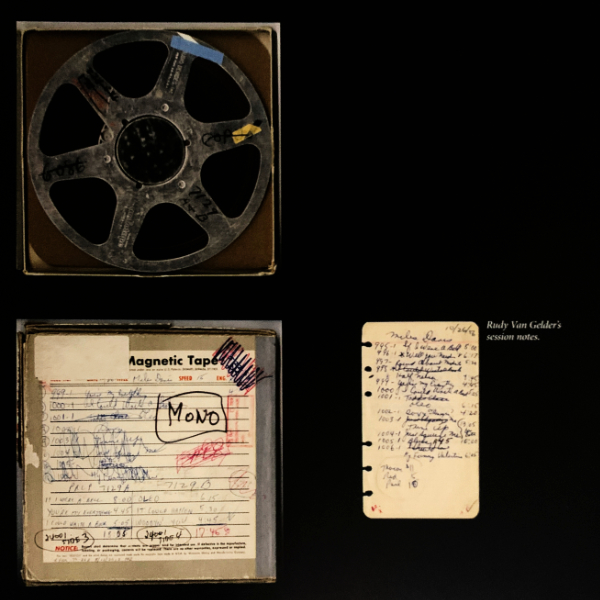
By the way, the 66-year-old original tapes used for making this new edition seem to be in overall very nice condition, but you will periodically detect minor anomalies that could have been caused any number of things — minor wrinkles, perhaps aging razor edits, etc., etc. I didn’t particularly notice these things on the OJC edition, or my original 1950s pressing. At any rate, I hope all this gives you some food for thought about an ultimately fascinating reissue.
Given the above-noted $109.99 price tag for this Small Batch 180g 1LP edition of Relaxin’ With The Miles Davis Quintet, the big question remaining is whether you need to own a copy. That answer will be personal to you, so perhaps consider the following points, presented here in no particular order.
1. How much do you love this recording? If it is a favorite, you may want this one, well, just because!
2. What level of audio gear do you own? Do you think it can properly handle an uber-dynamic disc like this one?
3. What is more important to you: a) authenticity of the original sound as presented when first released, or b) the best, clearest possible representation of the music you can buy for playback on modern high-end audiophile systems?
4. Are you: a) bothered by dropouts and tape anomalies that may have appeared on a master tape after 60-plus years in the archives, or b) would you prefer hearing a cleaner version of the recording on an original pressing (even with some inevitable clicks and pops from years of use) or a prior remastering/reissue from the 1980s?
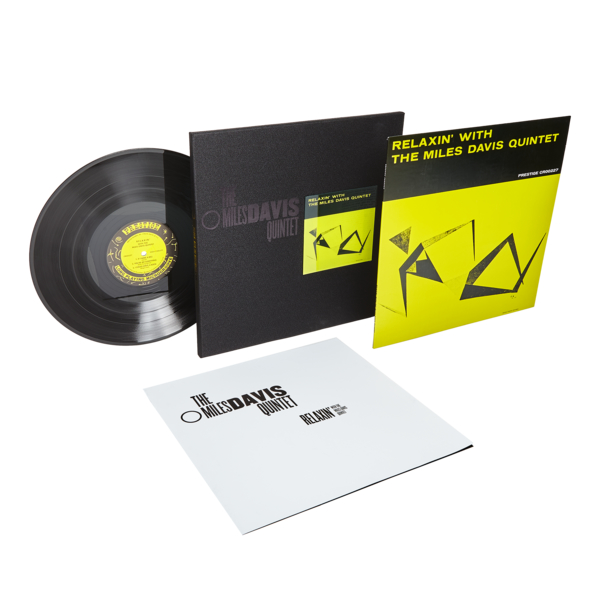
There are no doubt more questions to consider, but I think by now you get the idea — there are many variables at hand here.
As for me, I’m generally very pleased with this new Craft Recordings edition of Relaxin’ With The Miles Davis Quintet, and will keep it alongside my well-loved original pressing and the OJC version, as each offer interesting insights into the music. I do like how the new Craft edition more closely approximates the original album’s sonic profile while still updating it with more detail and openness — my personal preference. The OJC edition is great for what it is, and that may be a logical choice for many listeners who just want a good-sounding, affordably priced clean copy that will sound really nice on most any turntable.
All that said, for those with super-high-end gear wishing to be put to the test, Craft Recordings’ new Small Batch 180g 1LP edition of Relaxin’ With The Miles Davis Quintet may very well be your ideal demo disc.
(Mark Smotroff is an avid vinyl collector who has also worked in marketing communications for decades. He has reviewed music for AudiophileReview.com, among others, and you can see more of his impressive C.V. at LinkedIn.)
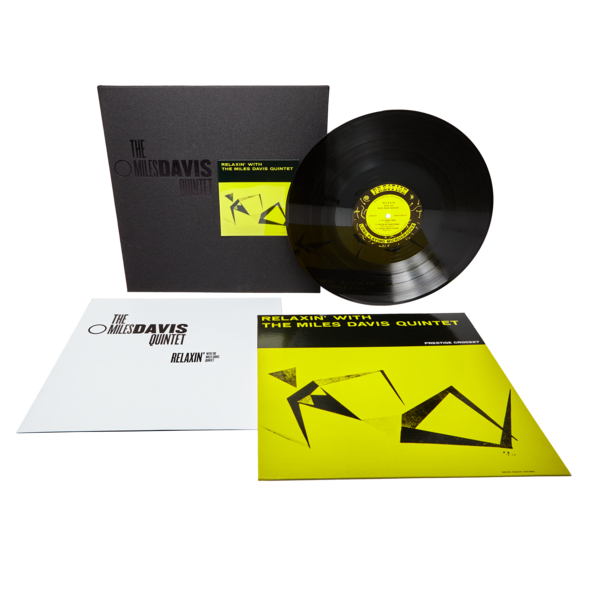
RELAXIN’ WITH THE MILES DAVIS QUINTET
180g 1LP (Prestige/Craft Recordings)
Side 1
1. If I Were a Bell
2. You’re My Everything
3. I Could Write a Book
Side 2
1. Oleo
2. It Could Happen to You
3. Woodyn’ You
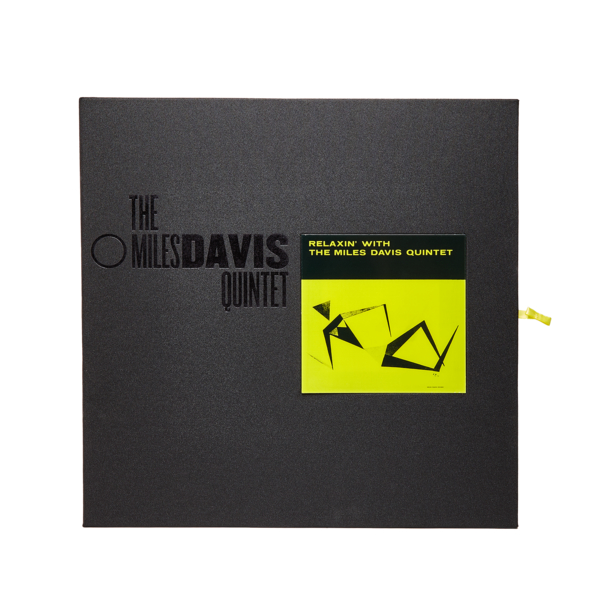
- Log in or register to post comments


I’ve subscribed to Analogplanet for more than 10 years….one of the best album reviews I’ve ever read on this website.

...but must admit that I'm very happy with my 2014 mono SACD version. Just great music.

You are right Tom L. I might just purchase the SACD which I am sure will sound awesome. Or wait for the mono pressing from Acoustic Sounds. Cheers!

I ordered one, but the opening track on side one was noisy with loud bursts for a few revolutions. At this price it had to be perfect and it wasn’t. I wanted to exchange it but Craft asked for a video of the noise bursts before they would take it, which I found annyoing, so just asked for a refund. It did sound great and the cymbals had a great crash and the drums had great depth and oomph. It’s a very good effort on their part but have decided not to reorder, as I’ve had a second sober thought and now find the price a little steep.

Exceptional Review. Wish you also had the AP KG@CA 33 & the SH/KG AP DOUBLE 45 to compare it too!
This is, to me, without question, an unparalleled success, and a reissue only equaled by Ron Rambach deceptively SRX MM 33s & Electric Recording Company reissues (I have 75% of the ERC catalog).
For me, PRLP 7129, is one of the greatest albums in all of the HARD BOP cannon. Barring a R2R reissue (second generation from the original Master Tapes), this cut of this album, with this format (LP), using this technology (SRX, ONE STEP) represents the GREATEST hard bop recording , GIVEN EQUAL CONSIDERATION TO PLAYBACK & AUDIO QUALITY [compared to the typical review considerations primarily weighted to favor] aspects of the performance itself and its influence & place in history, available in all of recorded music, TO THESE EARS!

I’d be interested in your experience with the ERC. Which of them is worse sounding than another reissue in your experience?

I am very happy with all their reissues.
And I am very thankful that they have done the Mozart a Paris Box, which holds several discs with the best Mozart playing in my music collection. Here I have no other comparison, with the sound being on the bit too dry side.

Like yourself, Mark, I own a 1958 Prestige mono pressing. More specifically, the earlier “fireworks label” in VG condition. “Relaxin” is a favorite of mine and I was looking forward to hearing the Craft/Grundman mastering. I listen to all mono recordings using a Lyra Titan mono cartridge mounted on a Schroeder Reference tonearm. IMO the Craft is deeply flawed compared to the original mono pressing. On B3, for example, the Dizzy Gillespie tune “Woody’n You” highlights solo performances by Davis, Coltrane & to a lesser extent, Philly Joe Jones. In the Craft re-issue, the solo artists are hyper-focused and the supporting quintet members virtually disappear. In the original Prestige/Van Gelder recording, the solo performers are not artificially removed from their interaction with the quintet. This lack of cohesion, IMO, is a feature of the entire pressing and results in an emotionally sterile presentation.

like in yours’ and Mark’s case, evaluations of two reviewers are done on gear with an up to 10 times price level difference. The relevance of other’s findings might be limited then.

These Craft are not that expensive. Relaxin' is good. I'll wait for Workin'

These high-priced reissues are a rip-off, in my opinion.
The OJC version, bought for $15.98, is plenty good for me.
Fantasy Records is sorely missed.

I will have to check this one out.

Miles’ trumpet on the Caft has more realistic and dynamic bite, the AP has a warmer overall balance and a bigger and more palpable imaging and scaling. I don’t remember all differences now, but unless one has a setup with too loose bass or too dark timbre, I suspect most would prefer the AP, except of the better trumpet bite, which also has its attraction. Having both is nice, if I had to decide I’d keep the AP.

I haven't heard the Craft version, neither have I ever heard a bad-sounding copy of this record. The AP, the OJC and even the CD sound really good. Except the piano, which sounds like it's still in the shipping crate.
I guess what I'm trying to say is that if you don't have a spare C-note you can still enjoy this wonderful music. So stop worryin' and start relaxin'.

I seem to remember reading some OJCs are all analog, others are from digital intermediate. I'm sure an expert can chime in here and let us know about the Relaxin' OJC?

I got to hear this release and I have to say I'm glad I didn't buy it. To me it sounded shrill and harsh. Other engineers wisely rolled off the highs a little to tame the sound of Miles' trumpet with Harmon mute. I have a 70s RVG cut of this album that I far prefer to this release. It's not on the quietest wax but it does sound better IMHO. I may pick up the AP 33 to compare eventually. Don't get me wrong, I'm a huge fan of Bernie G. and he usually gets things right. To me this was a rare misstep from him. Just my 2 cents.

then hear his Oscar Peterson on ORG, his Mingus on ORG, a ton of his Blue Notes on Classic Records, his Stravinsky titles on ORG ;-) This Caft is a little leaner in mids and bass and has full dynamics on top, but the others mentioned are brighter. He has a ton of bad days and 5 tons of good days in my opinion. Would be interesting what causes his inconsistency.

...the Prestige reissue twofer of "Workin' and Steamin'"from 1974, recorded at the same sessions as "Relaxin'". Anyone else have this?

This was also part of the Analogue Productions "Miles Davis Quintet The Great Prestige recordings" APJ 035.Cut by Stan Ricker.
